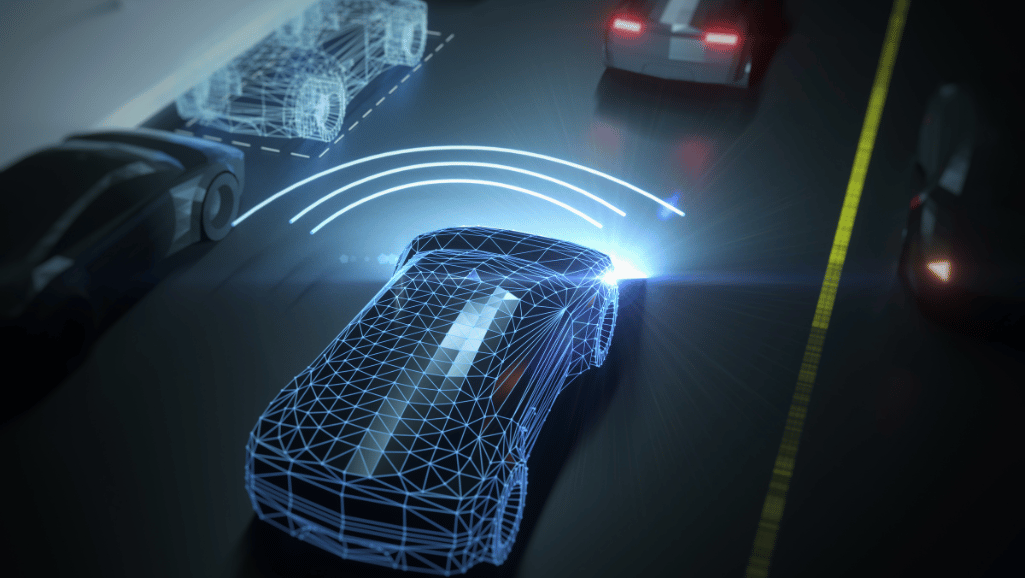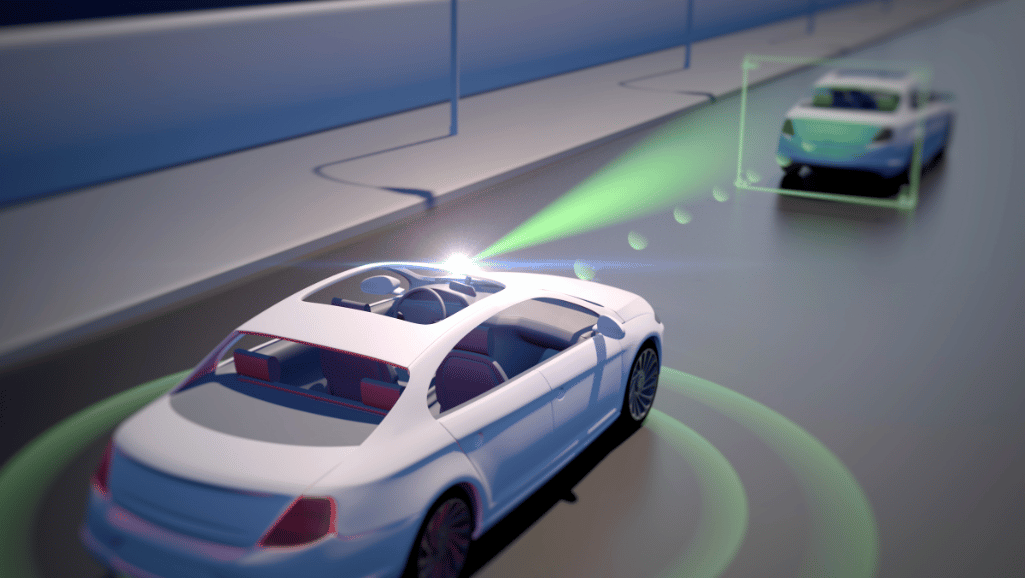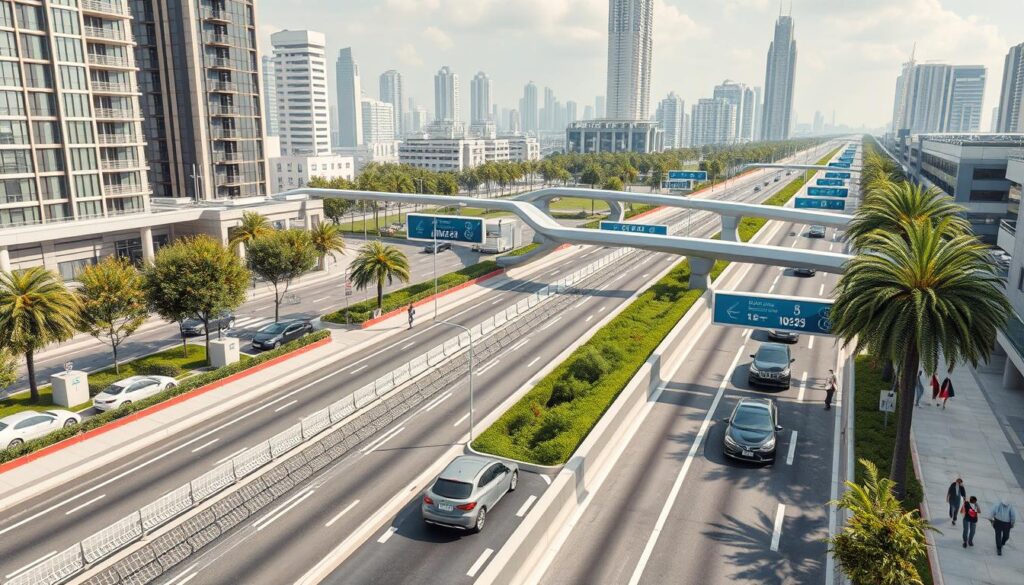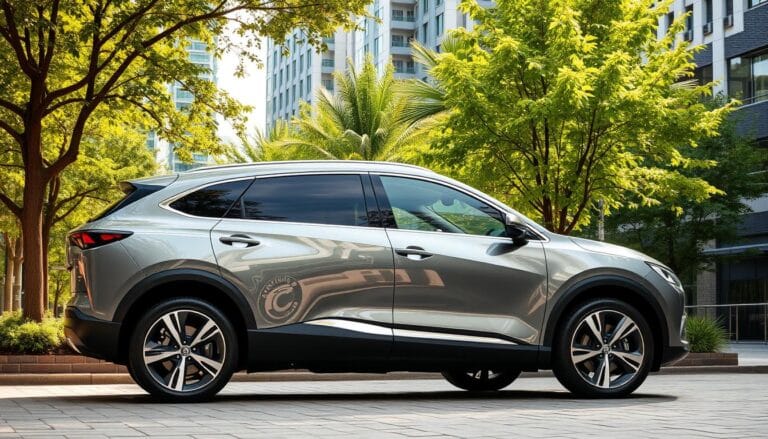The rise of autonomous vehicles (AVs) is changing the car world. They promise to make roads safer, cut down on traffic, and offer smart mobility solutions. People and investors are excited to see them on our roads soon. When Will Autonomous Cars Be Common.
Even with delays, experts believe AVs will change how we travel. McKinsey says AVs could make the auto industry hundreds of billions of dollars by 2030. As technology gets better, we’ll see more AD systems, making roads safer and travel smoother.
But, getting AVs on the road is tough. We’re still at Level 2, where drivers need to help. Reaching full Level 5 autonomy might take until 2040 or later. Governments and companies are working hard to make it happen, with goals like self-driving cars in the UK by 2025 and no road deaths in the EU by 2050.
Key Takeaways
- Autonomous driving has the potential to generate hundreds of billions of dollars in revenue for the auto industry by 2030.
- Advanced driver assistance systems could potentially reduce accidents by 15% in Europe by 2030.
- Consumers show a high level of interest in autonomous driving features and are willing to pay for them.
- Full Level 5 autonomy may not be achieved until 2040 or later for widespread use.
- Regulatory frameworks, infrastructure readiness, and public perception are key factors influencing the timeline for autonomous vehicle adoption.
Current State of Autonomous Vehicle Technology
The world of self-driving cars is changing fast. Big names like Waymo, GM’s Cruise Automation, and Tesla are leading the way. They’re spending a lot on research, making self-driving cars better and safer.
Major Companies in the Autonomous Driving Space
Waymo, a part of Alphabet, is a top name in self-driving cars. They have nearly 800 cars driving in California and Phoenix. In mid-2024, they showed off their sixth-generation system, with better sensors and power.
GM’s Cruise Automation had a tough time in 2023 after a car accident. But they’ve bounced back, with more money from GM. They’re also teaming up with Uber to offer robotaxis, reaching more people.
Tesla is working on its “Full Self-Driving” system. They’re not there yet, but Elon Musk says they’ll have self-driving cars by 2026-27. This shows Tesla’s dedication to making driving cars easier.
Recent Technology Advancements
Self-driving cars need new tech like AI, lidar sensors, and location tech. AI helps make these cars smarter and safer. Lidar sensors use laser light to map out the car’s world.
Location tech helps self-driving cars understand their surroundings. They use GPS, cameras, and sensors to navigate. As these techs get better, so will self-driving cars.
Key Regulatory Developments
Rules for self-driving cars are being made all over the world. In the U.S., the NHTSA has guidelines for safety and privacy. The EU is also making rules to ensure self-driving cars are safe and responsible.
It’s important for car makers and tech companies to work with governments. This helps build trust in self-driving cars. It’s a step towards making them a common sight on the roads.
Market Trends and Consumer Adoption Rates
The autonomous vehicle market is growing fast, with consumer adoption rates going up. The global market is expected to grow at a rate of 22.50% each year from 2024 to 2032. It’s valued at about USD 54.78 billion in 2023.
Asia-Pacific led the market in 2023, showing a big demand for new transportation options. Semi-autonomous vehicles were the most popular in 2023, showing a move towards full autonomy. Commercial vehicles were the biggest part of the market, promising better efficiency and cost savings.
Survey Insights on Public Perception
Many people are interested in autonomous driving, seeing its benefits like safety and fuel savings. But, public trust is key for wider adoption. Safety, reliability, and ethical issues are still big concerns.
Factors Influencing Adoption
Several things affect how people take to autonomous vehicles:
- Technological advancements and reliability
- Regulatory frameworks and government support
- Infrastructure readiness and smart city integration
- Cost considerations and economic feasibility
- Public trust and acceptance
Working on these areas will help speed up the adoption of autonomous vehicles.
Forecasting Market Growth
Market growth for autonomous vehicles varies by region and segment. Here’s a look at the projected market size and growth rates:
| Region | Market Size (2023) | CAGR (2024-2032) |
|---|---|---|
| North America | USD 18.2 billion | 21.8% |
| Europe | USD 14.6 billion | 22.3% |
| Asia-Pacific | USD 21.4 billion | 23.1% |
| Rest of the World | USD 0.58 billion | 24.5% |
By 2040, 25 percent of the global market will be autonomous vehicles. Fully autonomous cars will be available by 2035. As tech improves and rules change, the market will grow a lot, changing how we travel.
Government Regulations and Policies
Autonomous vehicles are changing fast, and governments are figuring out how to handle them. They want to make sure these cars are safe and useful for everyone. Let’s explore the rules for these cars and how countries are working together.
Overview of Existing Regulations
In the United States, 34 states have made their own rules for self-driving cars. Some states let companies test these cars, while others need them to meet certain standards. But, 17 states don’t have special rules for these cars yet.
The federal government is still working on its own rules. They hope to have them ready by 2027.
| State Approach | Number of States |
|---|---|
| Statutes accommodating AV piloting and testing | 12 (including Washington, D.C.) |
| Statutes approving AV use with standard requirements | 19 |
| No AV-specific statutes, relying on existing regulations | 17 |
| Statutes for limited AV use | 3 |
When Will Autonomous Cars Be Common Future Regulatory Trends
As self-driving cars get better, the rules for them will change too. The U.S. Department of Transportation plans to study how AI affects these cars. They want to make sure everyone follows the same rules.
States like Kentucky are also making their own rules. They want to make sure these cars are safe and follow the law. Kentucky’s new law requires car owners to have a safety plan and insurance.
International Approaches to Regulation
Other countries are making their own rules for self-driving cars. China is moving fast, with clear rules and places to test these cars. But, Europe is taking a bit longer to make its rules.
As countries make their rules, working together will be important. This way, everyone can make sure these cars are safe and useful for everyone.
Safety and Ethical Considerations

As self-driving cars hit the roads, safety and ethics are key. They could cut down on accidents caused by human mistakes. But, they face challenges like how to handle tough situations.
Ethical dilemmas pop up when deciding what to do in a crash. This is because AI algorithms make choices that could affect lives.
A study by the Insurance Institute for Highway Safety shows big benefits. It says self-driving cars could cut crashes by up to 90% in the U.S. This could save lives and lower costs. Yet, worries about the tech’s readiness, hacking risks, and who’s to blame in accidents remain.
Addressing Public Safety Concerns
Companies like Waymo and Tesla are tackling safety worries. They use sensors to gather info and make decisions. This includes cameras, radar, lidar, and sonar.
Waymo and Tesla have seen fewer accidents than human drivers. This shows the safety potential. But, more testing is needed to make sure the tech is safe and reliable.
Ethical Dilemmas in Autonomous Driving
Autonomous vehicles face tough choices in critical situations. These choices are made by algorithms, raising ethical questions. The “Trolley Problem” is a classic example of these dilemmas.
“The question is whether we should be worried about AI systems being programmed in ways that could prioritize the lives of some individuals over others in the event of an unavoidable accident.” – Matthew Liao, NYU
It’s important to be open and accountable in handling accidents. Manufacturers and regulators must create clear rules for these situations.
The Role of AI in Decision-Making
AI’s role in making decisions for self-driving cars is growing. It’s vital to think about the ethics involved. Debates are ongoing about how to handle complex choices, like saving lives or minimizing damage.
| Ethical Consideration | Description |
|---|---|
| Moral principles in design and programming | Ensuring that the AI algorithms governing autonomous vehicles are designed with moral principles in mind, such as minimizing harm and promoting fairness. |
| Data privacy and security | Protecting the privacy and security of data collected and processed by autonomous vehicles, as well as preventing unauthorized access or hacking. |
| Transparency and accountability | Establishing clear guidelines and protocols for managing accidents involving autonomous vehicles, ensuring transparency in decision-making processes, and holding manufacturers accountable for any issues that arise. |
| Equity and accessibility | Addressing the potential for autonomous vehicle technology to exacerbate existing inequalities in transportation access and ensuring that the benefits of the technology are distributed fairly across society. |
As self-driving car tech advances, we must keep talking about ethics. Manufacturers, policymakers, and the public need to discuss AI’s role in making decisions. By tackling these issues, we can ensure self-driving cars are safe and align with our values.
Infrastructure Readiness for Autonomous Vehicles
As we move towards more autonomous vehicles, getting our infrastructure ready is key. Autonomous vehicles could make our transportation safer, greener, and fairer. But, we face big challenges because our current roads and systems aren’t ready.
A Statista report shows how age affects willingness to use AVs in the US:
| Age Group | Percentage Willing to Use AVs |
|---|---|
| 18-29 | 70% |
| 30-44 | 62% |
| 45-59 | 56% |
| 60+ | 49% |
Despite growing interest, 74% of people think our roads aren’t ready for self-driving cars. Only 11% think they are. This lack of infrastructure readiness is a big obstacle to autonomous vehicle integration.
Current Infrastructure Limitations
High-definition mapping, reliable connectivity, and clear road signs are needed for AVs. The Victoria Transport Policy Institute’s report shows these are crucial for safe and efficient AVs.
AVs also rely on AI to handle traffic, signs, and pedestrians. The National Highway Traffic Safety Administration says 94 percent of serious crashes are due to human error. This highlights the need for strong infrastructure for AVs.
Innovations in Urban Planning
To tackle these issues, new urban planning ideas are vital. Governments and companies worldwide are looking into:
- Canada is considering making an Ontario highway toll road for AV tests.
- The European Union is checking out over a dozen AV projects, including 5G and road markings.
- China plans to have two lanes on a highway between Beijing and Xiong for AVs only.
- Cavnue and the State of Michigan are testing a road for AVs in a public-private partnership.
Smart Cities and Autonomous Integration
Building smart cities with sensors and connected roads is key for AVs. Investing in new tech and redesigning cities for AVs will make transportation better, safer, and greener.
People around the world increasingly support the idea of dedicated infrastructure for autonomous vehicles.
As we work together to get our infrastructure ready, the global autonomous car market is expected to grow. It will go from $54.23 billion in 2019 to $556.67 billion by 2026. This shows a bright future for this technology.
Economic Impacts of Widespread Adoption

The rise of self-driving cars is changing the transportation world. It will affect jobs and how we spend money. Autonomous vehicles will bring big changes, both good and bad.
Self-driving cars might lead to job losses. They can drive without humans, so some jobs might disappear. In the U.S., up to 3.5 million jobs could be at risk. But, new jobs will come up in making and fixing these cars.
Potential Job Displacements
Jobs in transportation and logistics might be hit hard. Taxi drivers, truckers, and delivery folks might see less work. As self-driving cars get better and cheaper, companies might choose them over people.
New Economic Opportunities Created
But, there’s a bright side. New jobs will pop up in tech and engineering. Also, safer and more efficient cars could boost e-commerce and city planning.
Cost-Benefit Analysis for Consumers
Buying a self-driving car might cost more at first. But, it could save money on gas and insurance in the long run. By 2025, over 8 million self-driving cars are expected on the road.
Autonomous cars will change more than just driving. Insurance and roadside help might see changes. They could also change how cities are built, making traffic better and parking easier.
| Year | Projected Number of Self-Driving Cars |
|---|---|
| 2025 | 8 million |
| 2030 | 10 million |
| 2050 | Nearly all cars on the road |
“The economic impact of autonomous vehicles will be far-reaching, transforming industries and reshaping the way we live and work.” – Industry Expert
As self-driving tech gets better, governments must act. They need to handle job losses, keep us safe, and support this new tech.
Future Predictions and Timelines
Autonomous vehicle technology is getting better fast. Experts say we’ll see more of them soon. The market is expected to grow a lot, reaching 62.4 million units by 2030. This growth will make the industry worth nearly $326 billion by the end of the decade.
Big car makers plan to sell self-driving cars as early as 2024. This big change will shake up the car world.
Expert Insights and Predictions
China is likely to lead in using self-driving cars, with 1.5 million sold by 2034. The U.S. might see 230,000 sold in the same year. Europe is expected to be slower.
These numbers depend on government support, tech progress, and how people feel about them. Since most accidents are caused by drivers, safety features will help people trust these cars more.
Potential Milestones in Adoption
The Society of Automotive Engineers (SAE) has six levels of self-driving tech. Levels 0-2 help drivers, while 3-5 can drive on their own. As tech gets better, we’ll see more cars that can drive themselves.
Big companies like GM and Ford are already working on this. GM bought Cruise Automation for $581 million in 2016. Ford put $1 billion into Argo AI in 2017. These moves show they’re serious about making self-driving cars real.
2030 and Beyond: A Vision for the Future
By 2030, self-driving cars could change how we travel and live. They could make roads safer and help more people get around. They might even make cities better places to live.
As tech keeps improving, the future of travel looks bright. Self-driving cars will be a big part of that future.









